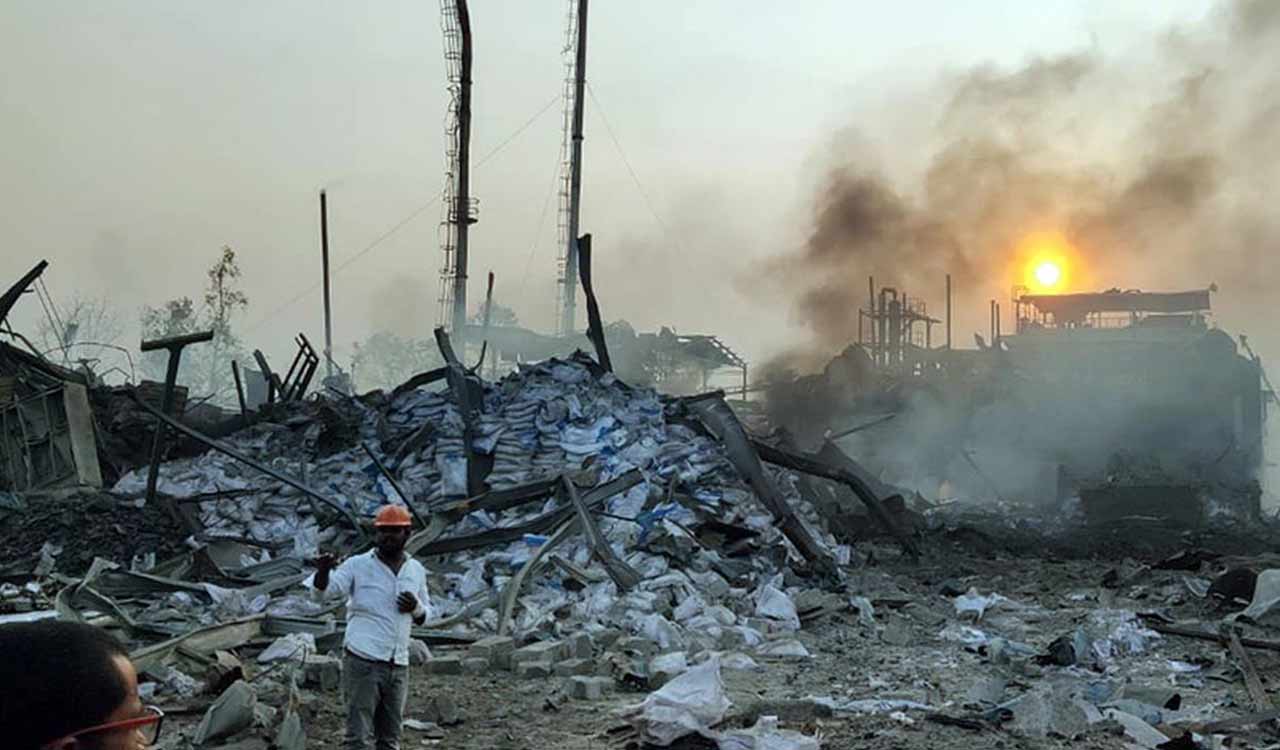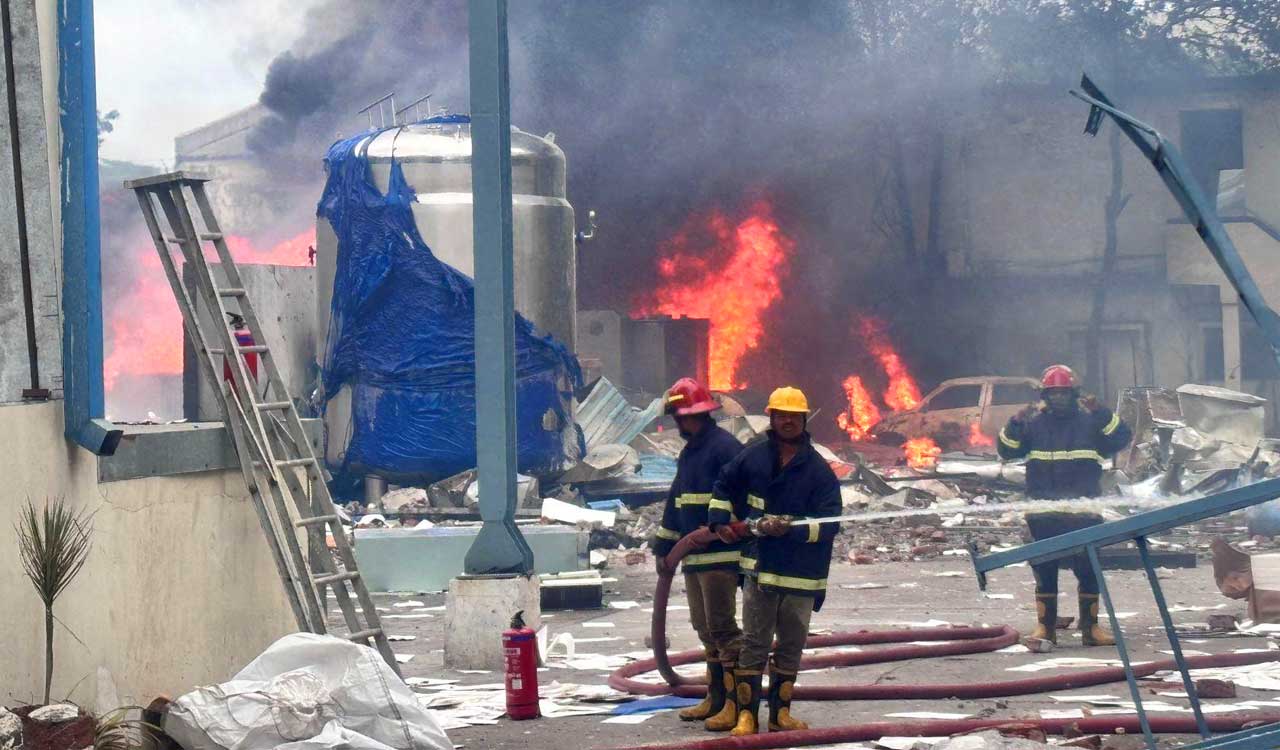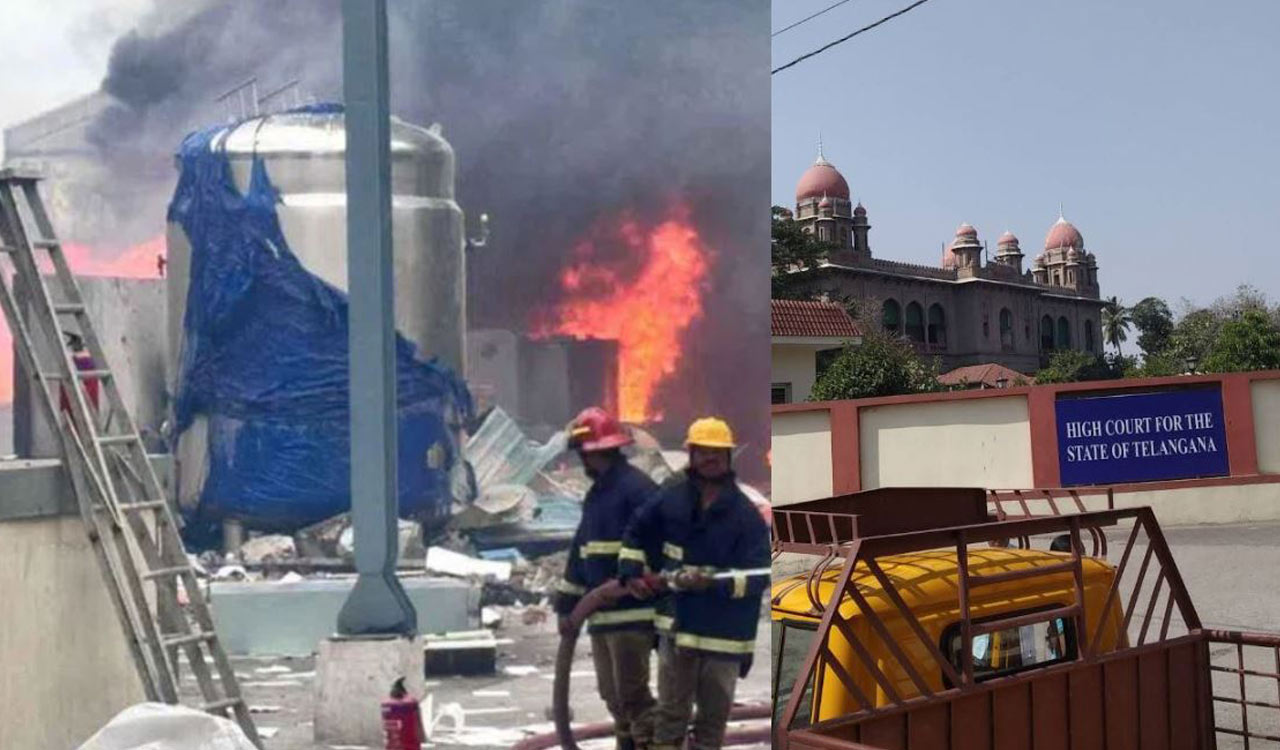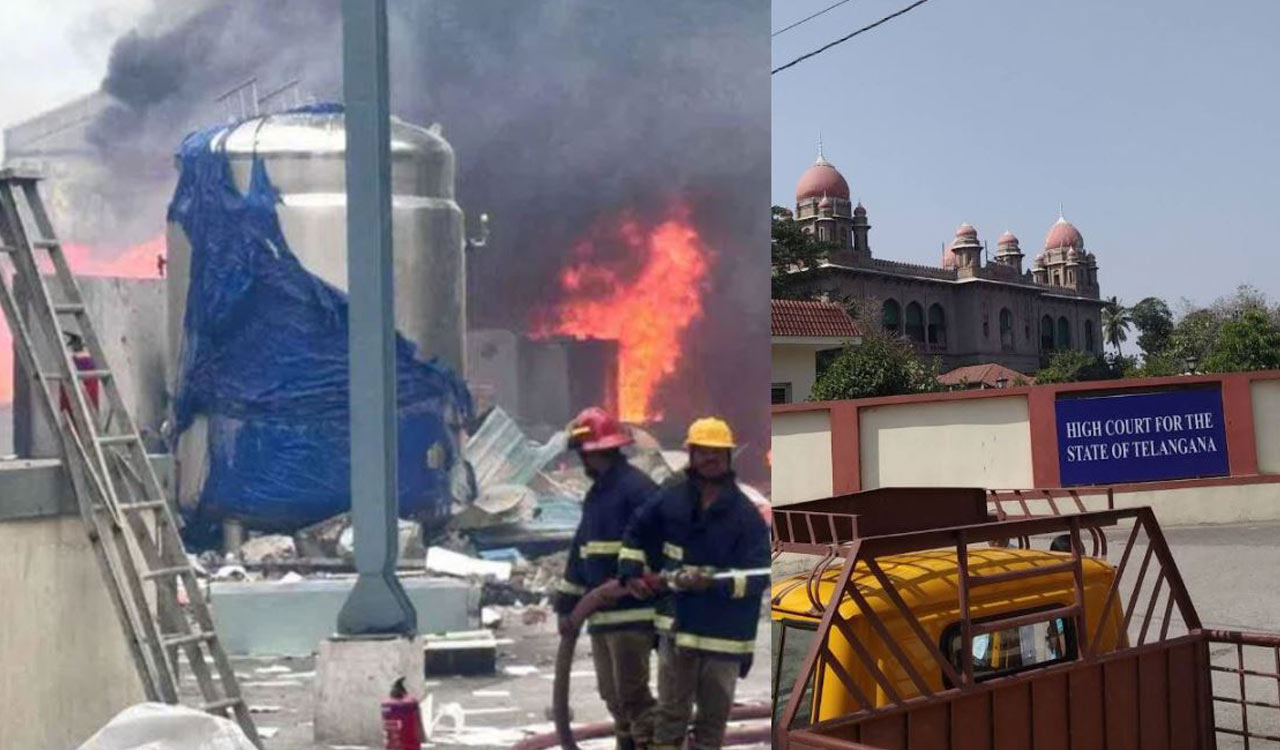Sigachi blast: Expert panel finds multiple violations, holds management responsible
A Technical Expert Committee probing the June 30 blast at Sigachi Industries in Pashamylaram has held the management responsible for gross safety violations. The 278-page report revealed that combustible MCC dust, untrained workers operating faulty machinery, and inadequate firefighting systems led to the explosion that killed 54 workers.

Sangareddy: The Technical Expert Committee constituted by the State government to probe the blast at Sigachi Industries Limited at Pashamylaram industrial area has found gross violations by the management in maintenance of the industry and ensuring safety of workers.
The committee submitted a 278-page report to the government, in which the experts have held the management squarely responsible for the blast that claimed 54 lives and left many workers injured.
After the blast on June 30, the State government had constituted the committee on July 2. The committee comprised Dr T Pradeep Kumar, Dr M Suryanarayanan, Dr Santosh Ghuge, Nilesh Ukunde and was led by chairman BV Rao, Former IICT scientist.
Since the district administration had cleared all the debris, equipment and material and dumped it in an open plot on July 3, the committee members said they were left with no opportunity to find the cause of the accident.
Considering the complexities of investigation, the committee employed fire and explosion forensic principles in which Nilesh Ukunde, Chief Investigator at Forensic Fire and Cyber Investigators, Nagpur, was an expert.
The committee came to the conclusion that the epicentre of explosion was the packing area where the Microcrystalline Cellulose (MCC), which is produced in Sigachi, dispersed as a dust cloud while the fire was initiated while operating a sealing machine of LDPE and HDPE bags. There was suspected malfunction of the sealing machine since it was operated by untrained workers.
Since there were 700 open bags of MCC lying in the vicinity, they immediately caught fire. The explosion occurred within no time as fire reached the dust cloud dispersed above the packing room.
The production in the industry was increased by 30 per cent in March 2025 but the civil structure built in 1994 remained the same. In fact, they had increased production from 15,200 kg per day to 25,200 kg per day in 2022 in the same building. It had become congested with the increased production and manpower in addition to adding new machinery, which the committee said was the basic reason for the accident.
The committee found that maintenance of machinery and housekeeping was compromised, proof of which was the huge amount of dust in the packing area. Despite knowing MCC was combustible dust, the management did not take any measures to mitigate dust formation and risk of ignition.
The company had stored large volumes of chemicals which were not used in the MCC production. There was no explanation from the management on why these chemicals were stored. The firefighting equipment and hydrant system was inadequate.
The committee’s investigation revealed that Sigachi Industries did use sodium chlorite in their process. But this was not revealed to the committee members, and the sodium chlorite drums might have exploded post the dust explosion and caused the death of five workers, the report said.
As per Telangana Fire Service Act 1999, the industry was mandated to have a fire hydrant, water sprinkler system, heat and smoke detection system, water tank and fire fighting pump house, apart from proper fire and emergency exits. However, none of these were available in the industry. This was a blatant violation of norms for the life and safety of all industry personnel.
The company had falsely claimed it had adopted ISO 14001:2015 and 45001:2018 though no certification with them. No safety expertise was available with them to impart safety training to workers. No safety expertise was available with them to impart safety training to workers.
The workers were not given personal protective equipment such as helmets, safety shoes, respiratory masks and hand gloves. Shockingly, there were no first aid facilities available though the industry was in operation for 35 years, the report said.
Setting aside following engineering safety protocols, they also placed the QA and QC labs above the production lab, which was vulnerable for dust explosion, the report said, also stating that government inspections over the years did not reflect the factual violations in the industry.
Related News
-
Three Americans killed; U.S. vows response to ISIS attack in Syria
4 hours ago -
Women’s rescue team shines as Singareni wins big at All India Mines Rescue Competition
4 hours ago -
Komuravelly Kalyana Mahotsavam to mark start of annual jathara
5 hours ago -
Over 8 lakh voters to cast ballots in Arunachal polls on Dec 15
5 hours ago -
AIIMS-led trial proves Supernova Stent safe and effective for stroke patients
5 hours ago -
Man killed, wife injured in Sangareddy road accident ahead of panchayat polls
5 hours ago -
Nitish Kumar Reddy claims hat-trick for Andhra in Syed Mushtaq Ali Trophy
6 hours ago -
Triveni Continental Kings eye hat-trick in Global Chess League
6 hours ago




